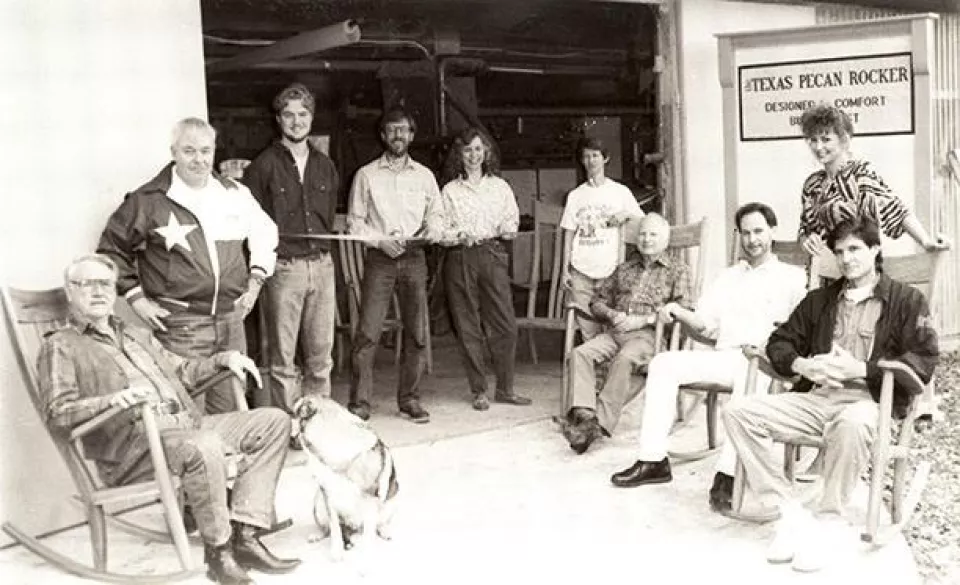Overtime, I despaired of using Texas pecan because of the poor color selection, the poor drying performance of the mills, the presence of powderpost beetles in a couple of loads, etc. One day, Anderson Tulley quit milling pecan in 2” thickness.
People still ask for pecan rockers from time to time.
As I was designing the Weeks Rocker, I was considering what wood to build it out of. Pecan appealed to me because I have spent many days under the trees, it is the state tree of Texas, and I thought chairs of it would appeal to my Texas clientele. This was before the internet gave us a world-wide clientele.
Pecan is hard, strong, and tough. Its heartwood can be a very lovely and variegated red-brown. Pecan is difficult to dry without cracks and shrinks and swells more than most furniture woods. The sapwood can be a very bland white. There is much more sapwood than heartwood. Most of the pecan lumber in the primary commercial channels is actually hickory. Hardwood lumber rules allow them to be sold together.
For many years, I made rockers of pecan that were mostly of the red-brown heartwood with some creamy white sapwood carefully matched into the compositions. I used exclusively pecan, no hickory, some from Texas, and some from Mississippi. In Texas, supply was sporadic from small mills with often questionable drying and grading abilities. The lumber from Anderson Tully in Vicksburg, Mississippi, a venerable mill with impeccable practices, was delivered dry and flat to a specification of 80% heart on the best face.

Overtime, I despaired of using Texas pecan because of the poor color selection, the poor drying performance of the mills, the presence of powderpost beetles in a couple of loads, etc. One day, Anderson Tulley quit milling pecan in 2” thickness.
People still ask for pecan rockers from time to time. This is a particularly nice Texas pecan slab. Note the variation in color, the sapwood under the bark, and the backleg pattern placed so the grain follows the curve.

